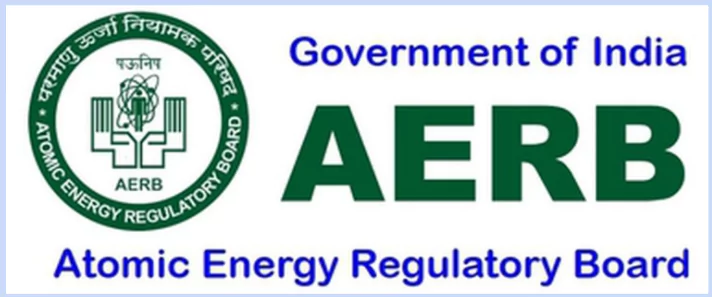Discussions are ongoing in India to amend the nuclear liability framework to allow private companies to build and operate nuclear energy-generation facilities in India.
What is a Nuclear Liability Law?
A nuclear liability law is a legal framework that defines the responsibilities, compensation mechanisms, and financial security requirements in case of a nuclear accident.
- It ensures that victims receive compensation and clarifies who is liable for damages.
Current Nuclear Liability Framework in India
- Civil Liability for Nuclear Damages Act (CLNDA), 2010:
- The Civil Liability for Nuclear Damage Act (CLND Act) was enacted in India in 2010.
- It establishes liability for nuclear accidents and ensures compensation for victims.
- Operator Liability: The CLNDA provides for strict and no-fault liability on the operator of the nuclear plant, where it will be held liable for damage regardless of any fault on its part.
- Operator’s is liabile for nuclear catastrophes up to ₹1,500 crore, which requires insurance or financial security.
- In case the damage claims exceed ₹1,500 crore, the government has to step in.
- Supplier Liability: Unlike international norms where only operators are held responsible, the CLNDA first time introduced the concept of supplier liability over and above that of the operator’s liability.
- Time Limit: The CLNDA 2010 imposed a time limit of 10 years for property damage and 20 years for personal injury, for filing compensation claims.
- It was enacted following concerns raised in Parliament over the Bhopal Gas Tragedy (1984).
- The Act faced some criticism from nuclear suppliers concerned about liability provisions.
- Proposed Amendments: Cap compensation claims against suppliers to the contract value (instead of unlimited liability).
- Align with global norms (e.g., Convention on Supplementary Compensation for Nuclear Damage) to attract foreign reactor vendors.
- Atomic Energy Act (AEA), 1962:
- The Atomic Energy Act governs nuclear energy development in India, allowing only government-controlled operations with limited private sector participation.
- In 2019, an insurance pool of Rs. 1,500 crores was set up to cover liability risks, but it failed to attract foreign investors.
- Proposed Amendments:
- Allow private sector participation: Private companies could build, own, and operate nuclear reactors (currently limited to NPCIL/BHAVINI).
- Independent regulator: Separate Atomic Energy Regulatory Board (AERB) from Department of Atomic Energy (DAE) to ensure autonomy.
- State monopoly: Only government-owned NPCIL (Nuclear Power Corporation of India Ltd) can operate nuclear plants.
Need for Reforms in Nuclear Energy Laws
- Clean Energy Goals: Aim to scale up nuclear power from 8 GW to 100 GW by 2047 to meet rising demand (e.g., for AI/data centers).
- Slow progress in nuclear expansion: Despite the 2005 Indo-US nuclear deal, India’s nuclear sector has not attracted expected foreign investment.
- Strict liability laws (CLNDA): Deterred international suppliers (Westinghouse, Areva, Rosatom) due to supplier liability risks.
- Government monopoly: Restricted private sector participation, limiting growth in nuclear energy capacity.
Arguments Against Proposed Amendments to India’s Nuclear Liability Laws
- Undermining Self-Reliance: Diluting the Atomic Energy Act (AEA) and CLNDA to attract foreign private investment compromises India’s long-standing self-reliance in nuclear technology.
- Shift from indigenous development (e.g., PHWRs, thorium research) to imported reactors (U.S., France) makes India dependent on foreign suppliers.
- Erosion of Supplier Liability: Current law holds suppliers accountable for defects, substandard materials, or negligence—critical for ensuring safety.
- Proposed changes cap liability at contract value, letting foreign firms escape full responsibility for accidents.
- Compromised Nuclear Safety & Regulation: AERB (Atomic Energy Regulatory Board) lacks independence, functions under DAE, creating conflict of interest.
- No Guarantee of Technology Transfer: Private firms (e.g., Westinghouse, Areva) sell reactors but retain core tech—India gains little in indigenous capability.
- Ethical & Legal Concerns: Weaker liability laws mean lower payouts for nuclear accident victims.
Impact of Amendment on Nuclear Energy Sector
- Boost to Foreign Investments: Aligning CLNDA with international standards will encourage U.S. and French companies to invest in India’s nuclear energy projects.
- Breakthrough in Long-Pending Deals: Will revive stalled contracts signed over a decade ago, expediting nuclear power expansion.
- Expansion of Nuclear Capacity: Strengthening India’s nuclear energy sector will reduce dependence on fossil fuels and help meet clean energy targets.
- Enhanced Private Sector Participation: Amendments to the Atomic Energy Act may enable greater involvement of domestic and international private players.
Atomic Energy Regulatory Board (AERB)

- The Atomic Energy Regulatory Board (AERB) was constituted in 1983, by the President of India under the Atomic Energy Act, 1962.
- It was established to carry out regulatory and safety functions in the nuclear energy sector.
- The primary mission of the AERB is to ensure that ionizing radiation and nuclear energy are used in India without posing undue risks to human health and the environment.
- It regulates industrial safety in Department of Atomic Energy (DAE) units under the Atomic Energy Act, 1962.
- It also administers provisions of the Factories Act, 1948, for nuclear energy establishments.
|
Conclusion
Amending India’s nuclear laws could unlock private and foreign investment, but challenges remain in liability structures, tech transfer, and economic feasibility. The shift requires balancing energy goals, safety, and strategic control.
International Conventions on Nuclear Liability
|
Vienna Convention on Civil Liability for Nuclear Damage (1963):
- Enacted in 1963 under the International Atomic Energy Agency (IAEA) framework.
- Establishes civil liability for nuclear damage and ensures compensation for victims of nuclear incidents.
- Places exclusive liability on nuclear operators, ensuring swift compensation.
- Requires mandatory financial security (e.g., insurance) for nuclear operators.
- India is not a signatory.
Convention on Supplementary Compensation for Nuclear Damage (CSC) (1997):
- Adopted in 1997, effective 2015 to enhance global nuclear liability.
- Establishes additional compensation funds beyond national limits.
- Strengthens international cooperation and uniform liability rules.
- India ratified CSC in 2016, aligning its Civil Liability for Nuclear Damage Act, 2010 with global norms.
|
![]() 6 Jun 2025
6 Jun 2025

